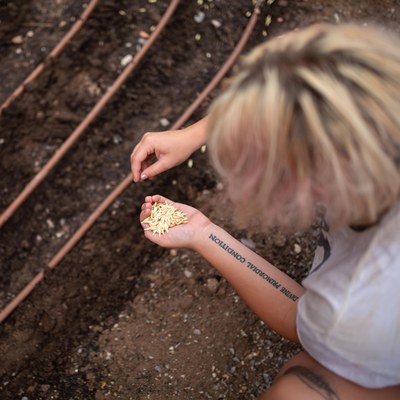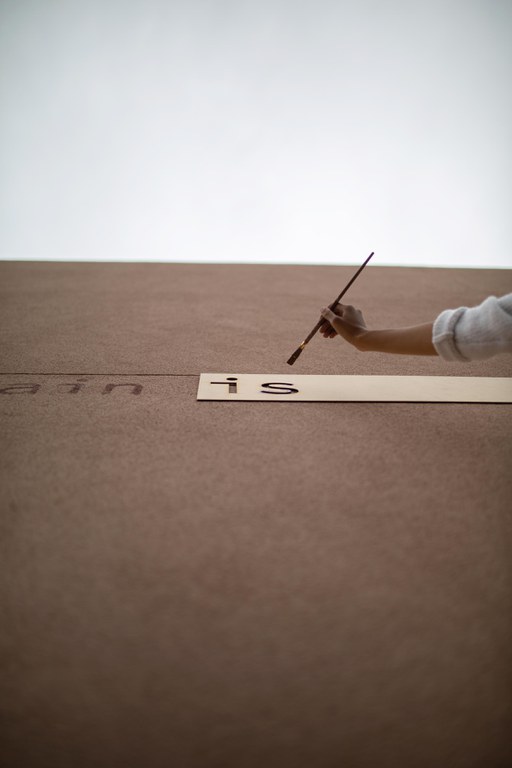The Birds Arrive: A Garden

Planting seed in the garden, Fall 2018

Collaborators
- Land Arts of the American West
- Rocky Mountain Seed Alliance
- Sarah Montgomery of Garden's Edge
- Tiana Baca of Desert Oasis Teaching Garden
- Albuquerque Museum
- 7th regen
- The Art & Ecology Area at UNM
- Seed BroadCast
- Sun, Wind, Rain
- Soil Microbes
The Birds Arrive was a heritage grains garden at the Albuquerque Museum on Mountain Road, built by Land Arts of the American West and 7th regen, in conjunction with Seed Broadcast's exhibition Seed: Climate Change Resilience in 2019. Land Arts of the American West built concentric planting beds radiating from a central existing pine, seeded with emmer, spelt, sonoran wheat, winter rye as a winter cover crop. In the summer, amaranth and perhaps three sisters plantings will succeed the heritage grains. The garden experiments with dryland farming areas and drip irrigation areas. It also accommodates the shadow line of the building. A light installation cast shadows of the growing plants on the building wall at night.
The site aimed to be an area for artistic installation and future community engagement. 7th regen had created a steel portal of three half arches reminiscent of sheafs of grain and a mud stenciled phrase, "I wait for the birds to tell me when grain is ready," spoken by Tiana Baca of the Desert Oasis Teaching Garden. The name of the garden/installation - The Birds Arrive - was adapted from Baca's quote and the acronym TBA (to be announced). This project was about possibility, variability, and engagement.
Catherine Page Harris, MLA, MFA
Asst. Prof. of Landscape Architecture and Art & Ecology
University of New Mexico
